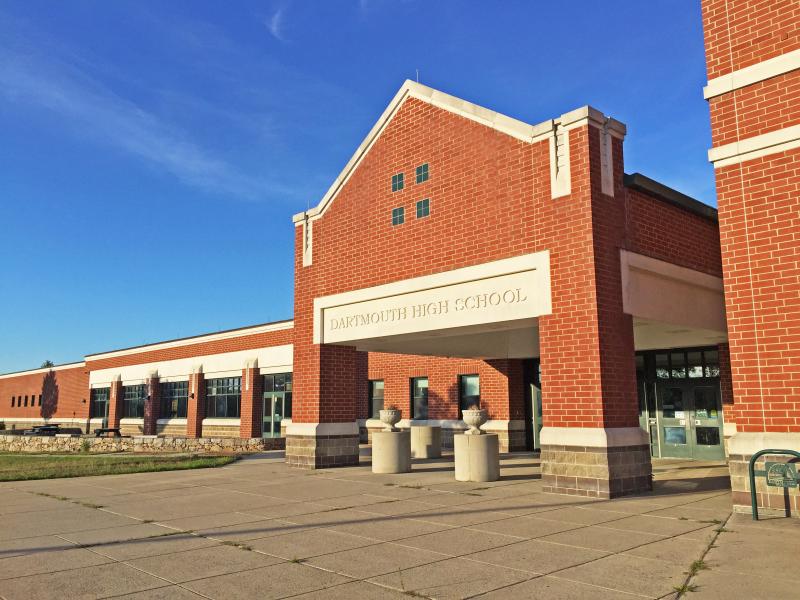Clearing the air: High school staff crack down on vaping
Dartmouth High School equipped its restrooms with sensors designed specifically to measure the amount of vapor in the air from e-cigarettes back in early March after educators wondered how prevalent vaping is for its students.
Much to the school’s dismay, it’s a real problem.
“Unfortunately, it confirms some of our beliefs that there is a concern with students,” said Principal Ryan Shea, adding how it’s also adults at the school given that the detectors have gone off at night.
At this time, the vape detectors are located in two main bathrooms, but the school is pushing to expand the program in addition to a few other measures to deter vaping.
The detectors measure the percentage of air impurity and send an alert via an app to school administrators whenever the level of impurity is anything above about 50%, Shea said, adding how an e-cigarette doesn’t necessarily have to be in use for it to be detected. Once detected, school staff can check in and see what may have triggered it by entering the bathroom and also reviewing the cameras of who entered before it went off.
The staff will have conversations with students, check for impairment and, if needed, will conduct a search. If items are found, the students will be subject to “progressive disciplinary action,” which is dependent on how often they’ve offended. Shea said every consequence is coupled with support and education.
While freshmen and sophomores study the dangers of vaping as a part of their health curriculum, the education provided to offenders is more specific to their needs, Shea said.
He said staff have done well in catching detection and addressing the situations, but more monitoring staff is needed to truly address the problem. There are 22 areas that would need to be covered by detectors, and given the size of the school, it can be difficult for staff to get to every detection.
“Right now it’s more of preventative measures and being seen,” he said.
With 10 or so people in the bathroom it can be difficult to distinguish where the detection came from, but with staff checking in and being present it can be easier to sort out those situations as well as deter the behavior.
Data collected from the detectors has indicated that peak times of vape usage is around lunch and at the end of the day, Shea said, adding the school is then able to increase its security presence in those areas.
While he is not able to provide specific data about the number of students and offenses at this time, Shea said the district is planning a presentation that will include some of this information and more to demonstrate the school’s level of concern.
While the district is in support of expanding the vape detector program and hiring more security staff, they face financial barriers.
At a Dartmouth Advocates for Addiction, Recover and Treatment meeting, Superintendent June Saba-Maguire and Assistant Superintendent of Finance and Operations James Kiely presented four initiatives that could possibly be funded by the opioid settlement funds.
Two of those initiatives include expanding the vape detectors program, which would cost $18,000, and hiring one additional full-time security staff member, who can also provide some education and resources to students, which would cost $27,000, according to Kiely.
“We do want to make it really clear to our kids that it’s not OK to vape in school — it’s not OK to vape at all,” said Saba-Maguire.
She highlighted how this is not just a concern coming from staff, but also the students themselves, who say they don’t feel comfortable using the bathroom because of the activity.
No vote has yet taken place for whether the settlement funds will be used, but, knowing these funds are only temporary, this will be requested as a part of the school’s budget regardless.
Shea said, “It’s a major concern of mine. It’s a public health concern in general. It really, really makes me concerned that I believe students originally got some version of addiction when they weren't fully aware of the facts of how dangerous they can be.”
He highlighted the decline in smoking back in the 2010s and how the introduction of vapes were meant to combat that.
“We really don’t want [our students] to be pawns to the tobacco company,” he said. “We want our students to be aware of how addictive and how dangerous they are and we’re hoping that they are growing and learning from that.”














